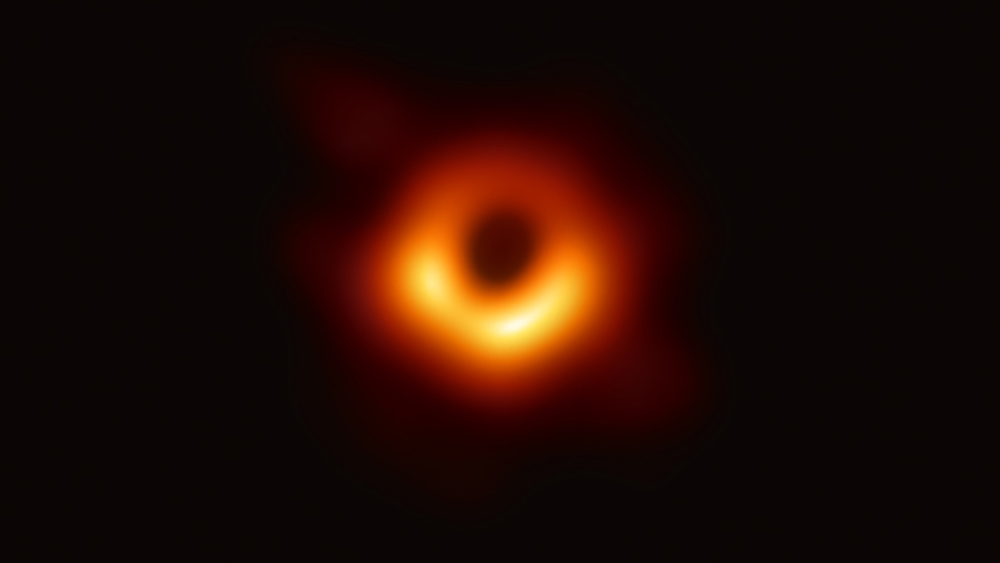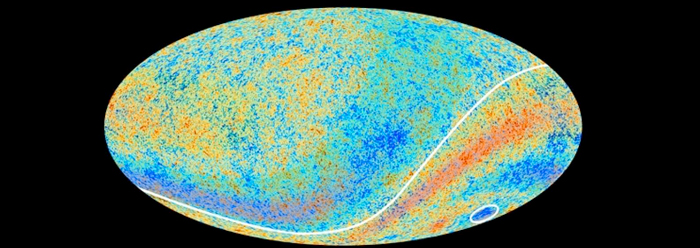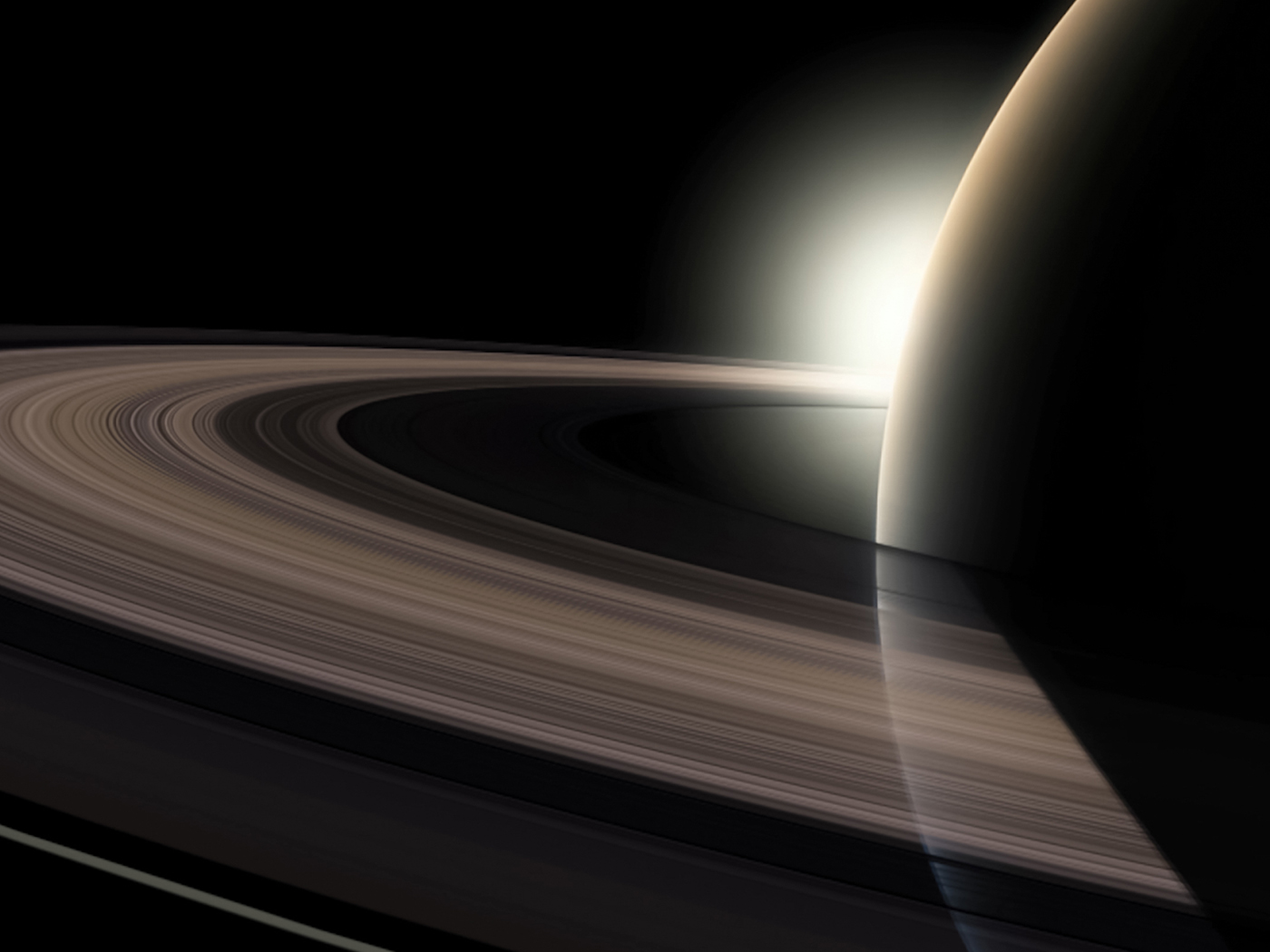On April 10, 2019, a team of astronomers revealed the first-ever photograph of a black hole.1 Modern physics sees time and space as being interconnected, forming a kind of “fabric” or “membrane” called spacetime. A black hole is a region of spacetime that is extremely distorted by the presence of a sufficiently dense mass. The gravity in this region is so strong that anything getting too close to the black hole will never escape.
Some black holes have masses comparable to that of our sun. These “stellar mass” black holes are thought to form when a star consumes the last of its nuclear fuel and collapses under the influence of its own gravity. Other supermassive black holes are thought to have masses millions or even billions of times greater than this. These supermassive black holes seem to be present at the centers of most, if not all, large galaxies, including our own Milky Way.2
This particular black hole is a supergiant black hole, with an estimated mass five billion times greater than that of our sun. It’s located in the “supergiant” elliptical galaxy M87 about fifty million light-years from Earth.1
Scientists have long speculated on the possible existence of such objects, and there is much evidence for their existence. However, this is the first time that a black hole has been imaged directly.
Or at least somewhat directly. The black hole itself can’t really be photographed because its gravity is so strong that any light emitted from within the black hole’s edge (a spherical boundary called its event horizon3) literally cannot escape. Rather, the image shows a glowing disk of gas surrounding the black hole’s shadow. This swirling disk of gas has been “swept up” by the black hole’s strong gravity.
Scientists performed this very impressive technical achievement by using a network of eight radio telescopes around the world called the Event Horizon Telescope.1
Does this have any relevance for creation? Due in part to the weird nature of black holes, some creation supporters have questioned whether they are real. We have every reason to think that they are. Einstein’s theory of relativity makes very accurate predictions about their behavior and, as stated earlier, there is much indirect—and now direct—evidence for their existence.
The image agrees very well with predictions from Einstein’s theory of general relativity. As an aside, many creation researchers think that Einstein’s theory can help explain how we can see distant starlight in a young universe.
Finally, it’s worth noting that supermassive black holes, such as the one just photographed, present big problems for Big Bang scientists. Some of these giant black holes have been detected at enormous distances from us. In Big Bang thinking, this means we are seeing these giant objects, not as they are now, but as they were shortly after the Big Bang. The most extreme example is a giant black hole thought to have formed just 690 million years after the Big Bang.4 Yet secular scientists are puzzled as to how natural processes could form such massive objects so relatively quickly.5,6 This is very similar to the problem of “mature” distant galaxies that also plagues the Big Bang model.7
Black holes may be weird, but like all God’s works they defy secular attempts to explain the universe apart from our Creator. ![]()
Black holes may be weird, but like all God’s works they defy secular attempts to explain the universe apart from our Creator.
References
1. Grossman, L. and E. Conover. The first picture of a black hole opens a new era of astrophysics. Science News. Posted at sciencenews.org April 10, 2019, accessed April 10, 2019.
2. Active Galactic Nuclei (AGN)/Supermassive Black Holes. Website of the Spitzer Space Telescope at the Jet Propulsion Laboratory, California Institute of Technology. Accessed April 10, 2019.
3. The term event horizon was coined by Dr. Wolfgang Rindler, one of the professors at my alma mater, the University of Texas at Dallas. Kotaru, A. UTD Celebrates Legacy of Founding Faculty Member. The Mercury. Posted at utdmercury.com February 25, 2019, accessed April 10, 2019.
4. Landau, E. and E. Bañados. 2017. Found: Most Distant Black Hole. Posted at nasa.gov December 6, 2017, accessed April 10, 2019.
5. Kormendy, J. and L. C. Ho. 2013. Coevolution (Or Not) of Supermassive Black Holes and Host Galaxies. Annual Review of Astronomy and Astrophysics. 51: 511-653.
6. Saplakoglu, Y. 2017. Zeroing In on How Supermassive Black Holes Formed. Scientific American. Posted at scientificamerican.com September 29, 2017, accessed April 10, 2019.
7. Thomas, B. 2011. Distant Galaxies Look Too Mature for Big Bang. Creation Science Update. Posted at ICR.org November 30, 2011, accessed April 10, 2019.
Dr. Hebert is Research Associate at the Institute for Creation Research and earned his Ph.D. in physics from the University of Texas at Dallas.























